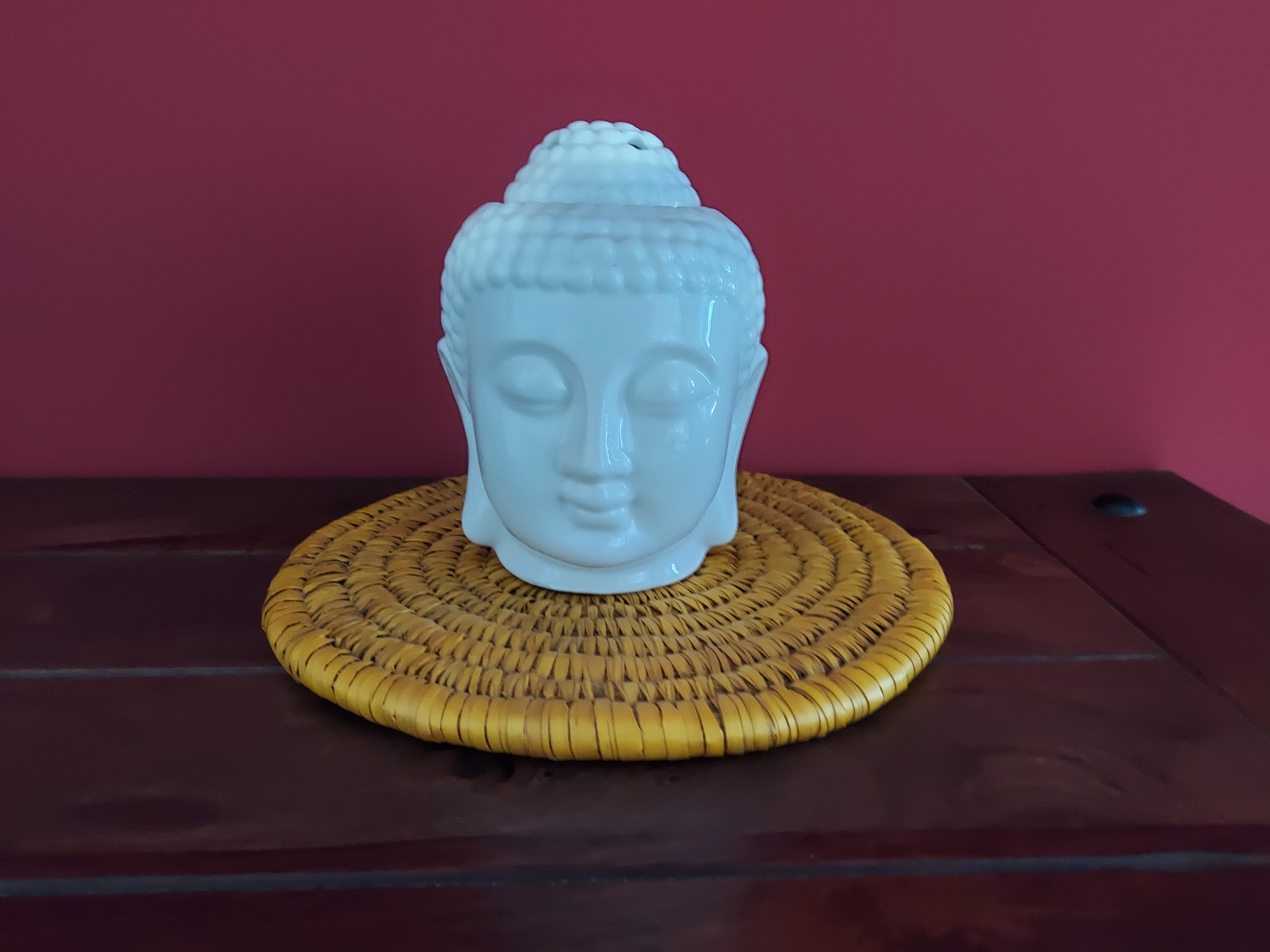These are interesting times for smartphone buyers. While OnePlus pioneered the concept of an affordable flagship smartphone, Xiaomi, Realme and many others have sustained the momentum. Packing specifications that rival top-of-the-line hardware and nearly matching the experience, the line between a value flagship and a true premium device is blurry at best.
Enter the Galaxy S10 Lite. Samsung’s flagship property has so far skirted away from the $500 to $600 segment, but changing times call for radical new solutions.
The Galaxy S10 Lite errs close to the full featured Galaxy S10 experience with top-end internals, a software experience to match, as well as a quality camera set up. Read more in our Samsung Galaxy S10 Lite review.
The Galaxy S10 Lite’s design leans towards the Note line up more than the S10 series, but that’s not necessarily a bad thing. The phone has distinct design cues that differentiate it from everything else at the price point.
Up front is a large 6.7-inch display with a Full HD+ resolution. Despite the size, I had no issues carrying the phone around since the 20:9 aspect ratio definitely helps with ergonomics. Using the phone, however, is another story. As one of the largest devices in Samsung’s portfolio, one-handed operation is absolutely impossible.
The display on the Samsung Galaxy S10 Lite isn’t quite as good as what you get on the S10 and the flagships because it packs Quad HD resolution. Unless you place it side by side with a higher-resolution screen, it is hard to find fault here. Color accuracy is good, but not quite perfect. The whites display a very cool, blue hue. It is possible to switch over to a vivid mode to boost saturation, and yes, the display is HDR10+ capable. The S10 Lite also excels at outdoor visibility and the display can be set bright enough for viewing under direct sunlight.

Like the Note 10, the Galaxy S10 Lite sports a punch-hole camera on the front. I’m not too fond of this, but I’ve got to admit I barely noticed it after a couple of days. The camera hole is small and unobtrusively placed towards the top edge. There’s a 32MP camera in there.

The rest of the hardware package is exactly what you’d expect. The volume keys and power button are located on the right, and are easy to reach. The left side sports a dual nano-SIM and microSD card slot. A USB-C port and speaker grille grace the bottom edge. Nope, no headphone jack here!
The phone has in-display fingerprint sensor that I found to be accurate, but not particularly fast. Samsung has definitely come a long way from the hit or miss implementation on the Galaxy S10, but the competing OnePlus 7T still has it beat.

Flip over to the back and you’ll notice the S10 Lite is similar to the newly launched Galaxy S20 series. The large camera module, for example, closely resembles the Galaxy S20 Ultra, though it obviously lacks the imaging prowess of the latter.
The S10 Lite eschews gradients for a solid, understated design.
To keep costs and weight low, the Galaxy S10 Lite switches out the glass back for a polycarbonate material. At first glance, it is easy to mistake for glass. The look and feel is uncanny. However, it is a composite material called glasstic. In my time with the phone, it seemed to hold up well enough. Fingerprints might not be a big issue, but it does pick up scuffs and lint. Keep a microfiber cloth handy.

Despite the “lite” moniker, Samsung did not cut corners with internal specs. The Snapdragon 855 in the S10 Lite delivers some of the best performance figures this side of the 865. Interestingly, in India, this is the first S-series phone with a Snapdragon chipset. The Snapdragon 855 here sports a single Kryo 485 core clocked at 2.84GHz for high-power tasks, a cluster of three Kryo 485 cores clocked at 2.42GHz for middling tasks, and a cluster of four Kryo 485 cores clocked at 1.78GHz for low-power tasks. Graphics are handled by the Adreno 640 GPU.
Coupled with 6GB or 8GB of RAM, I had no issues multi-tasking and jumping between multiple apps. Games run maxed out at the highest settings and look great while at it.
Samsung has done a wonderful job at optimizing the software, resulting in a buttery smooth user experience.
Moreover, Samsung has done a truly great job at mating the software to the hardware. Performance remains absolutely slick no matter what you throw at the device.
A 4,50omAh battery keeps it all running. Samsung upped charging speeds to support 45W using a USB PD 3.0-compliant charger. However, the in-box charger tops off at 25W, which is not bad either. In my testing, the phone took just over an hour to top-off from scratch. Battery life itself was excellent. The Snapdragon 855 has proven itself to be a frugal chipset and I regularly achieved between five and six hours of screen-on time depending on usage. You will easily get a full day of use and then some from the S10 Lite.
The S10 Line runs the same software stack as the Galaxy S10. That means Android 10 with One UI 2.0. By default, the phone ships with an app drawer enabled, but it is a cinch to switch over to a home screen-only layout.
Samsung made useful additions to One UI to enable a deep level of customization.
All the usual Samsung features, including edge screen shortcuts and edge lighting, are present here. The latter makes good use of the always-on display to show glanceable notifications at the top. The power key defaults to Bixby, but you can switch it over to the standard power menu. Similarly, you can map double tapping the power key to any app on the phone.
Samsung phones have always had robust customization options and the S10 Lite is no exception. From the ability to reduce animations, to switching between button- or gesture-based layouts, the phone also lets you switch over to Android 10’s default gesture navigation with options for adjusting sensitivity.

The S10 Lite is equipped with an interesting mix of cameras. The primary is a 48MP shooter with a maximum aperture of f/2.0. This is paired with a 12MP, f/2.2 ultra-wide shooter and a dedicated 5MP macro camera.
Personally, I don’t really care for this new-fangled trend of dedicated macro cameras. While some surely appreciate the macro, it is not nearly useful enough to justify replacing a telephoto lens. A 32MP camera does duty at the front.

For what it’s worth, the macro does a good job at taking close up shots. You will need to be about 3cm to 5cm from the subject to be able to capture a focused image, but the results can be suitably dramatic. There is ample noise in all but the brightest lighting, so this camera is best used outdoors.

The camera has a very typical outdoor Samsung image signature. Colors are ever so slightly over-saturated to give them a punchy look. The HDR mode kicks in automatically and lifts details out of shadows at the expense of added noise. I noticed a modest amount of noise suppression with smeared details when completely zoomed-in. This shouldn’t be much of an issue for most users and the images should suffice for all but the most demanding of mobile photographers.

Generally speaking, the punchy colors produced by the primary camera fare well against the competition. The most obvious competitor to the Galaxy S10 Lite is the OnePlus 7T. The latter includes a more useful telephoto lens, but the primary camera is similar. The Galaxy S10 Lite’s primary camera generally captures more detailed and accurate images.
 S10 Lite indoor shot S10 Lite indoor night mode
S10 Lite indoor shot S10 Lite indoor night mode 
In less than ideal lighting things do go south, as is usually the case. Despite including OIS, images often ended up slightly blurry and noisy. Night mode proved to be an effective way of bringing up details in the shadows and for creating a brighter image. Still, this is one area where the OnePlus 7T pulls ahead with its much more consistent and noise-free performance.
Finally, the 32MP selfie shooter produces above average 8MP pixel-binned images. By default, the camera errs toward beautification features and brightens up shots perhaps too much, but you can switch off most of the settings for a more natural image.
Video capture on the Galaxy S10 Lite is particularly good. Footage recorded at 4K/30fps looked detailed with true-to-life colors and sharp focus. Interestingly, the ultra-wide mode is also capable of capturing 4K video — not a very common feature. Samsung’s super steady OIS feature works like a charm, all the way up to 1080p 60fps. It makes use of the ultra-wide camera to capture a broader field of view and then crops in to the centre of the
19/02/2020 11:00 AM
19/02/2020 09:00 PM
19/02/2020 06:10 PM
19/02/2020 09:46 PM
19/02/2020 08:58 PM
19/02/2020 11:11 PM
19/02/2020 06:34 AM
19/02/2020 11:45 PM
2014 © Canadian apps and news